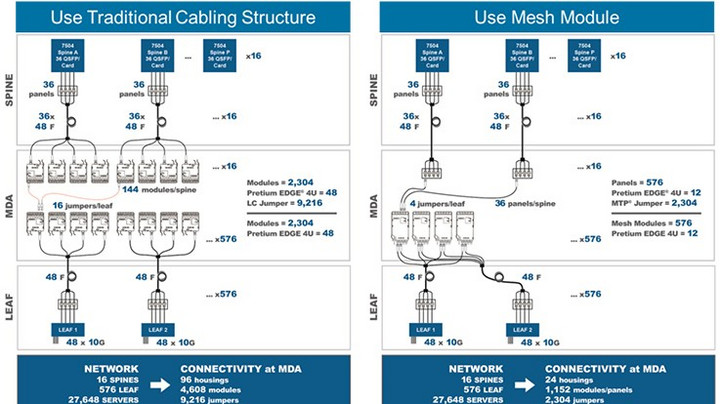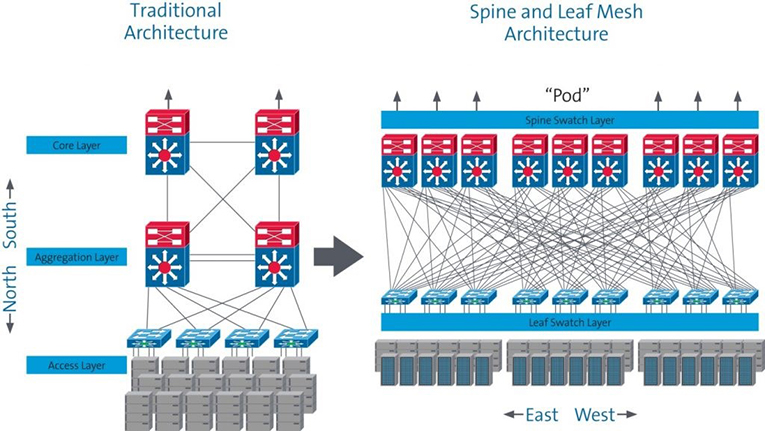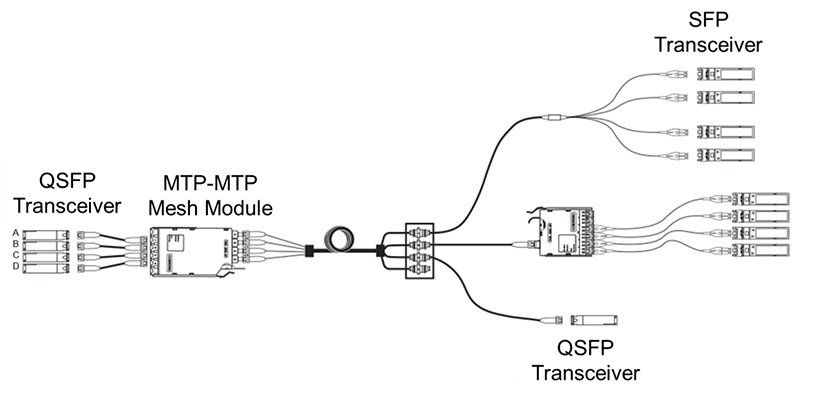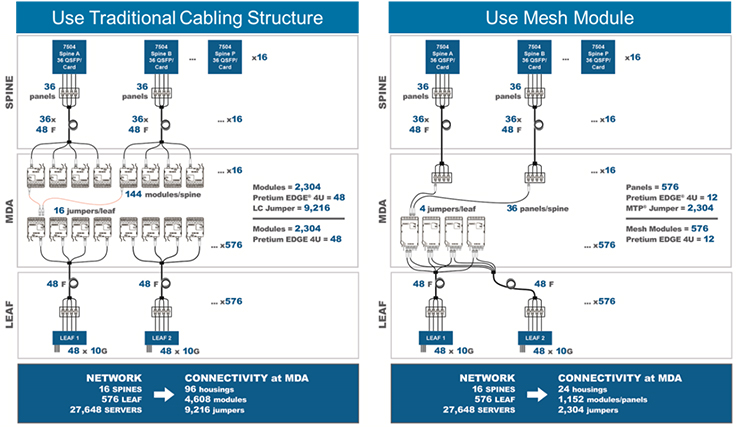Blockchain & The Cloud: Transforming Data Center Architecture for Tomorrow
Data centers have to adapt to new business strategies and adopt new technologies to keep pace with their customers’ needs. Anthony Robinson from Corning Optical Communications explains how data centers can facilitate the rapidly increasing data traffic from the always-on consumer.

Source: Corning Optical Communications
Enterprise data centers have traditionally focused on data storage and preparation for disaster recovery, but they don’t always meet the ebb and flow of demand for real-time, multi-user data retrieval. In today’s evolving digital market, there are more users and more data. This growth puts pressure on data centers to facilitate faster data transmissions for an increasing number of Internet users worldwide. In the face of big data, data center operations are shifting from storage to the real-time analysis and processing of data based on demand.
Today, organizations are turning to blockchain, a system that acts as a digital record-keeper, utilizing multiple hardened data centers around the world to verify changes to data sets. Data centers have to adapt to new business strategies.
To pave the way for technologies like this, large data centers are evolving their digital infrastructures for the next generation of cloud services. But they need the right infrastructure in place to ensure the rapid, seamless, and secure transmission of data, voice, and video to an increasing number of users. For these reasons, many data centers are transitioning from current 3-level tree network architectures to a spine-and-leaf network architecture, which can accommodate blockchain systems and increasing data processing demands.
Transforming data center infrastructures
In contrast to the traditional enterprise, where data center traffic is dominated by local client-to-server interactions (north to south), the network traffic of the large Internet data center is dominated by the server-to-server traffic (east to west) required for cloud computing applications. The number of users accessing data via applications is not only huge; they also have diversified and fragmented demands and require an uninterrupted user experience. Internet data centers require higher bandwidth and a much more efficient network architecture to support spikes in heavy traffic from their large number of users.
The current mainstream 3-level tree network architecture, which is based on the traditional north-to-south transmission model, is not effective for the applications as it consumes a large amount of system bandwidth and creates latency concerns. To address these challenges, the world's large Internet data centers are increasingly adopting a spine-and-leaf network architecture, which is more effective for transferring data between servers (east to west) and allows data centers to expand according to business needs with lower initial investment costs (see Figure 1).

Figure 1: Traditional 3-Level vs. Spine-and-Leaf 2-Level Network Architecture. Source: Corning Optical Communications
But data center managers encounter new issues when deploying a data center with a spine-and-leaf 2-level architecture. Since a leaf switch is required to connect each spine switch, managing a massive quantity of cabling becomes a major challenge. Corning’s mesh interconnection module (Table 1) solves this difficult problem by enabling a fully meshed, 10G fabric connection between the QSFP spine switch ports and the leaf switch ports without ever having to break out to LC connections at the main distribution area (MDA) (see Figure 2).

Table 1: Mesh Module. Source: Corning Optical Communications

Figure 2: Three typical applications of mesh modules in the cabling system. Source: Corning Optical Communications

Source: Corning Optical Communications
Figure 3: Full cross-connection cabling structure comparison of spine-and-leaf network architecture MDA.
The traditional structure (Figure 3, left) has not been widely used because the cabling system is very complex, the cost is relatively high, and it requires a lot of rack space at the MDA. In this scenario, the use of a mesh module can be a good solution to resolve these problems. In the case of a network module used in MDA (Figure 3, right), the full mesh of the leaf switches is achieved without having to break out the 40G port of the spine switch into 10G channels via an MTP-to-LC module. This greatly improves the MDA cabling structure by eliminating massive LC-to-LC patch fields and can be of great value for the user (see Table 2).

Table 2: Advantages of a Mesh Module in the MDA. Source: Corning Optical Communications
Once the proper infrastructure is in place to support the growing amount of data traffic, data centers can better secure that data. Blockchains have become popular solutions through recent examples like Bitcoin, but they are not limited to the financial sector. The technology, sort of external ledger, uses a cryptographic method to distribute data across multiple computers, making it more difficult to hack. Data centers that implement the technology can provide clients with an even more secure storage method for users’ sensitive information.
Catering for future demands on data center services
Data center network infrastructures are going through major transformations to meet the demand of continuously growing data traffic and the need to securely store sensitive information. At the same time, they must support the Internet of Things, 5G networks, and billions of new devices, while continuing to supply the increasing speed and scale required for this interconnection.
As network bandwidth requirements for the data center rise, the backbone of the data center network has been gradually upgraded from 10G to 40G, and will reach 100G in the near future. The spine-and-leaf network architecture will deliver an economical and efficient network structure for the management of large data distribution. Utilizing the mesh module to achieve a full fabric mesh of the spine-and-leaf network supports the current 40G network while ensuring the seamless transition to future 100G network capabilities as user demand grows.
Not only must data centers evolve to meet the demand of higher traffic and more devices, but they must also prioritize securely storing users’ sensitive data. By transforming their architecture and adopting a more secure blockchain strategy, data centers can take the next step forward to a completely connected society.
Download the full paper “Blockchain & the Cloud: Transforming Data Centre Architecture for Tomorrow”
Anthony has seventeen years’ experience in the structured cabling industry in the distribution, manufacturing, installation and consulting sectors of the markets, working with clients to develop long-standing mutually beneficial strategies and relationships and to provide the highest quality of service and support demanded in today’s challenging environments.
Bringing a wealth of commercial and technical experience, he joined Corning in April 2012 to develop and execute data center strategies across EMEA with a primary focus of maintaining Corning’s tradition of delivering continuous product and solution innovations in anticipation of their global clients’ needs.
Anthony has been a BICSI Registered Communications Distribution Designer (RCDD) since 2001, a Certified Data Center Design Professional (CDCDP) since 2011, and a Certified Network Installation Design Professional (CNIDP) since 2015.
Please note: The opinions expressed in Industry Insights published by dotmagazine are the author’s own and do not reflect the view of the publisher, eco – Association of the Internet Industry.
Early 2018, eco will host the Blockchain Masters conference in Frankfurt. More details will be online on blockchain.eco.de in a few weeks.



